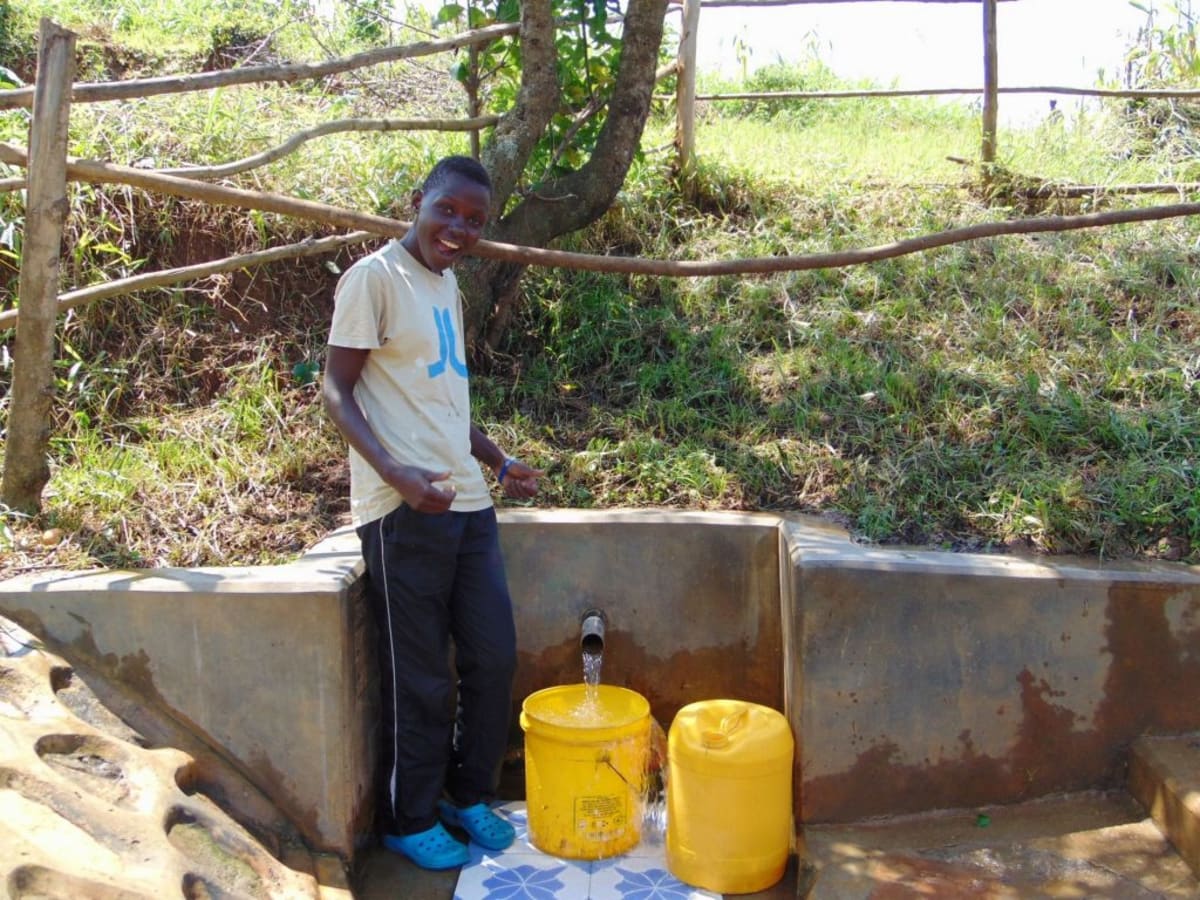Maria Spring is located in Mungaha B Community of Kakamega County. The people of this community are blessed with many acres of land, so farming is the main activity carried out.
A normal day begins early in the morning around 6:00 am. Students are seen all over the roads rushing to schools - this is a good indicator that education is highly valued. Women are seen taking their containers to the spring to get water as the male counterparts ensure the cattle are directed to their grazing areas.
The people of this community make their livelihoods from casual labor and vegetable farming. What makes this community special is that they border the Lusumu River. This river provides water which is used for irrigation and so they never lack food, especially vegetables.
Despite the community having the river as a natural resource, it is also a risk for the community members in the rainy season. The water overflows and floods their crops causing destruction. Accidents are also rampant for the children who swim in this river. Those who do not know how to swim easily drown.
Water
A student from St. Kizito Lusumu approached the field officer after attending one of our trainings at her school. After listening keenly during the introduction, she heard the officer explain the main focus areas of our work. This is when she remembered life back at home - how they hustle to get clean water.
The water is gathered from an open spring which does have stones that prevent people from stepping into the water and making it dirty. They use mostly jugs to get the water and then pour it into larger 20-liter jerrican. Those containers are then used to carry the water back to their homes.
Some come with sieves to keep visible particles and dirt out of the collected water. The gathered water is stored in plastic containers for up to 1-2 days and used for a variety of things from drinking to cooking to cleaning.
The poverty level in the community is high and this is why they cannot afford large storage containers, making them go to the spring more than once a day. The time wasted traveling back and forth to fetch the water negatively affects the community, especially the women who generally have to get the water for their households.
The current water source is likely contaminated since it is directly open to all kind of bacteria and any other pollutants.
The community's safe water shortage fosters waterborne diseases like typhoid which makes the community members sick. Another effect is school absenteeism. Many children miss school due to poor health caused by the unclean water.
"Our grandparents have used this spring the way it is and up to now, we are still following as we suffer waterborne diseases. The most painful part is when we see our young children suffer diarrhea and we do not know where to get help," Beatrice Maende, a local businesswoman, said.
Sanitation
More than three-quarters of households have latrines. The condition of the latrines is not very good. Most are in poor shape, with walls made of rusted iron sheets. The doors are made of sugar sacks which flutter around when there is a strong wind.
Garbage is disposed of in a compost pit where plastic bags are burnt.
Here’s what we’re going to do about it:
Training
Community members will attend hygiene and sanitation training for at least two days. This training will ensure participants have the knowledge they need about healthy practices and their importance. The facilitator plans to use PHAST (Participatory Hygiene and Sanitation Transformation), CLTS (Community-Led Total Sanitation), ABCD (Asset-Based Community Development), group discussions, handouts, and demonstrations at the spring. One of the most important topics we plan to cover is the handling, storage, and treatment of water. Having a clean water source will be extremely helpful, but it is useless if water gets contaminated by the time it’s consumed. Handwashing will also be a big topic.
Training will also result in the formation of a committee that will oversee operations and maintenance at the spring. They will enforce proper behavior around the spring and delegate tasks that will help preserve the site, such as building a fence and digging proper drainage. The fence will keep out destructive animals, and the drainage will keep the area’s mosquito population at a minimum.
Sanitation Platforms
On the final day of training, participants will select five families that should benefit from new latrine floors.
Training will also inform the community and selected families on what they need to contribute to make this project a success. They must mobilize locally available materials, such as bricks, clean sand, hardcore, and ballast. The five families chosen for sanitation platforms must prepare by sinking a pit for the sanitation platforms to be placed over. All community members must work together to make sure that accommodations and food are always provided for the work teams.
Spring Protection
Protecting the spring will ensure that the water is safe, adequate and secure. Construction will keep surface runoff and other contaminants out of the water. With the community’s high involvement in the process, there should be a good sense of responsibility and ownership for the new clean water source.
Fetching water is predominantly a female role, done by both women and young girls. Protecting the spring and offering training and support will, therefore, help empower the female members of the community by giving them more time and efforts to engage and invest in income-generating activities.

 Protected Spring
Protected Spring
 Rehabilitation Project
Rehabilitation Project











































